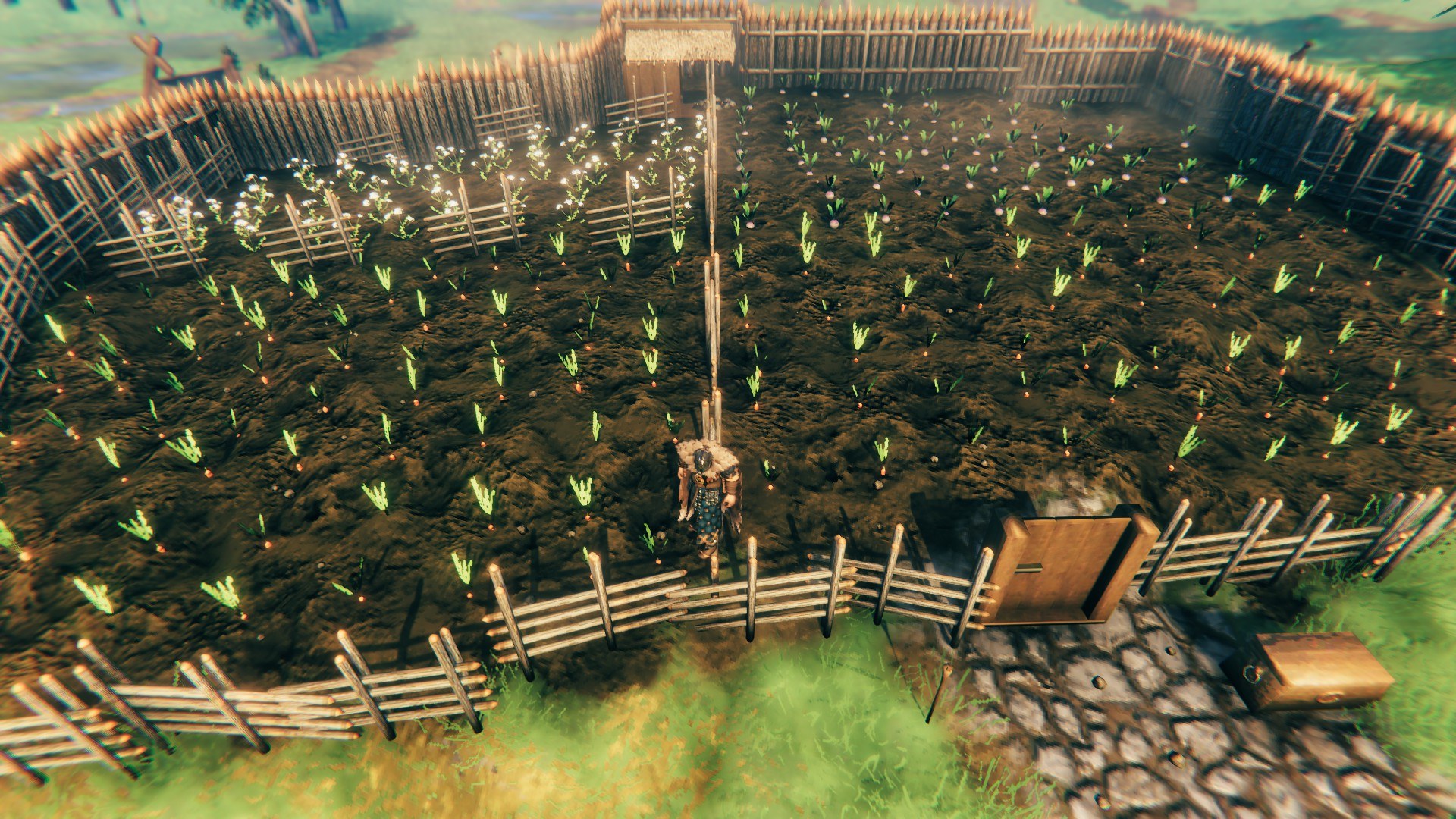
Valheim is a survival crafting game unlike any other. It takes elements from the genre and thoughtfully changes them to increase the player's quality of life. One of the easiest places to see this carefulness in action is in the game's food system. Instead of punishing the player for not eating by decreasing their health, health regeneration, or even killing them, Valheim simply gives the player health and stamina buffs for consuming food.
But sooner or later, playing the game without those buffs will feel like a form of self-inflicted punishment. Maintaining a stable food supply in Valheim can help keep your Viking well fed throughout their adventure, and farming is one of the best ways to do just that.
Farming in Valheim is a solid way of supplying you and your Viking crew with food throughout the course of your adventures, but it doesn't really kick off until you leave the Meadows. Once you beat Eikthyr and head into the Black Forest, be on the lookout for a vibrant green plant with three heads of little white flowers. Picking one of these up should give you three carrot seeds — just enough to provide a foundation for your farm.
Carrots can be used in carrot soup, an early game food that adds 20 health and 60 stamina to your Viking. The other required ingredient, mushrooms, can be found by foraging around the Meadows and Black Forest.
You'll also need a cultivator tool at a cost of five bronze and five core wood. A bit more time in the Black Forest will supply the goods. With the cultivator, till some land to start your farming operation. In the cultivator menu, select "carrot" and plant as many as possible. Each carrot needs a certain amount of space to be healthy and grow. A good rule of thumb is to leave about a Viking’s width about each one, as shown below.

Once these carrots have fully grown — about two to three in-game days — harvest them, but make sure not to eat any!
Go back into the cultivator menu and select "seed-carrot." Each seed-carrot you plant will net you another three carrot seeds, effectively tripling your carrot count. For instance, if you plant 12 carrot seeds, then use the grown carrots to plant seed-carrots, you'll end up with 36 carrot seeds and therefore 36 carrots in the end. It may sound a bit confusing, but with the method outlined below, you’ll establish a sustainable farm without the need for any math.
Continue tripling your carrots until you reach about 60 per player. You're then going to want to block out and flatten a large swath of land before cultivating it. Build a fence around the perimeter, then build another down the middle, cutting the field in half. Next, on one half of the field put another fence down the middle and cut it in half. You should have something that looks like the image below at the end.

In one of the smaller segments, plant as many seed-carrots as possible. In the other small segment, plant an equal amount of normal carrots. With every harvest, your seed-carrots should produce enough carrot seeds to fill both the small and large fields. The carrots grown in the small field are then re-used for seed-carrots, and the large field produces carrots that you and your friends can eat. With this farm arrangement, you can keep your food supplies topped up without needing a calculator.
When you enter the Swamp biome, you’ll come across turnip plants. Turnip farming works in a very similar fashion to carrots, with seed-turnips also being a part of the cycle. It's worth transitioning your carrot farm to a turnip farm when the time comes, as turnip soup will grant you an additional 50 health.
And finally, animals such as boars and deer can and will eat your crops. In addition to breaking into your farm if it’s not properly walled off, they can also spawn directly inside and cause havoc without you even noticing. To prevent animals from spawning, build a small shelter at the corners of your farm. Animals and mobs of all kinds are forbidden to spawn in a certain radius around buildings, making this a sure-fire way to protect your crops.

By the time you reach the Plains, your appetite is going to be a lot bigger. The Lox that roam this biome make for great eating, but their meat can only provide you with one of three food slots. Bread and Lox Meat Pie can help fill in the gaps, and both can be cooked with an easily farmed ingredient: Barley.
Barley can be found in the chests scattered around Fuling camps and, unlike carrots and turnips, does not have a complex farming process. Every barley planted gives the player two barley when fully grown. Barley can also be planted much closer together than carrots or turnips, with very little spacing needed. Don't be afraid to pack your fields tightly!

One piece of bread takes 10 barley's worth of flour to produce, so don't be cheap when planting the stuff. Flax, which is used in crafting recipes rather than cooking ones, can also be found in Fueling villages and is farmed in the same way as barley. It's recommended that you only reserve a small portion of your farm for flax, as once your equipment is fully upgraded there is no need for its further cultivation.
Nicolas Perez is a journalist who has played way too much Civilization 5. He's rambling on Twitter @Nic_Perez_.


